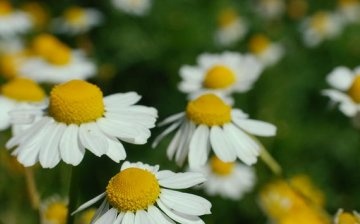Odorless chamomile - medicinal chamomile
Odorless chamomile is more familiar to us as pharmacy chamomile. Almost everyone has this medicinal plant in their home medicine cabinet. Although the doctors of Ancient Rome and Greece were still valued chamomile, it eventually lost its popularity and only at the beginning of the 20th century returned it again.
Odorless chamomile can also be grown in home gardens - it is resistant to droughts, but it is worth remembering that it requires a lot of moisture during germination. Chamomile propagates by seeds, and they must be sown in spring or before winter. It is necessary to sow it in rows, the distance between which should be 50-60 cm.
The use of chamomile officinalis
Odorless chamomile has the following effect:
- anti-inflammatory;
- laxative;
- pain reliever;
- diaphoretic;
- carminative;
- choleretic;
- emollient.
Chamomile is a part of many preparations - gastric, emollient, soothing, carminative. The well-known soothing tea, which consists of chamomile, valerian, mint, cumin and fennel.
Flower baskets and herbs are used in medicine to treat diseases of the gastrointestinal tract - enveloping and emollient properties, high absorption and the ability to remove toxins from the body help to return the digestive system to normal.
Fresh decoctions of chamomile flowers and herbs are used to wash ulcers and wounds, to treat skin diseases, all kinds of dermatitis.
Chamomile flowers are also widely used in cosmetology - masks made from decoction of flowers restore elasticity, velvety and a healthy complexion to the skin, smooth out wrinkles and remove pigmentation.



